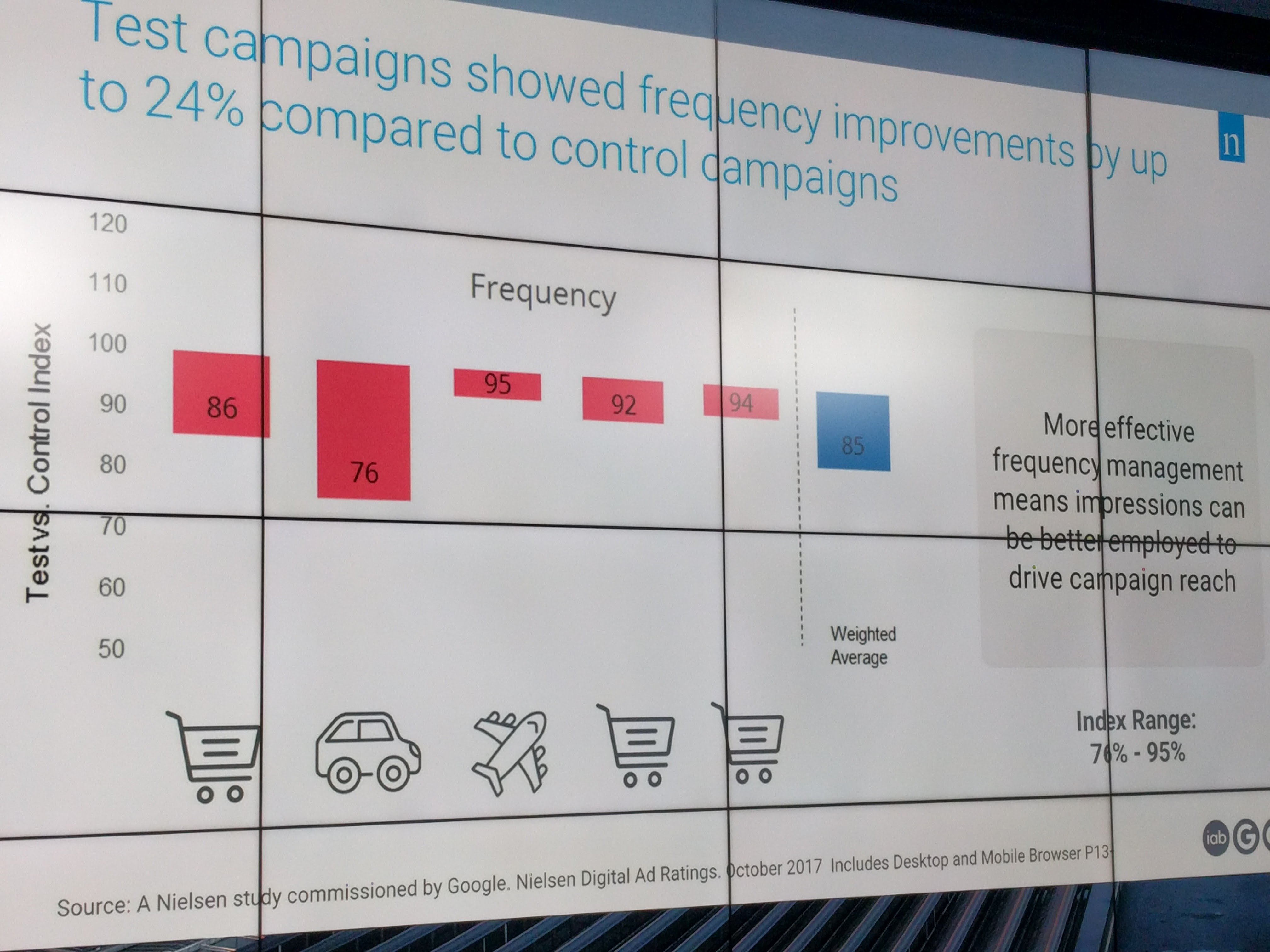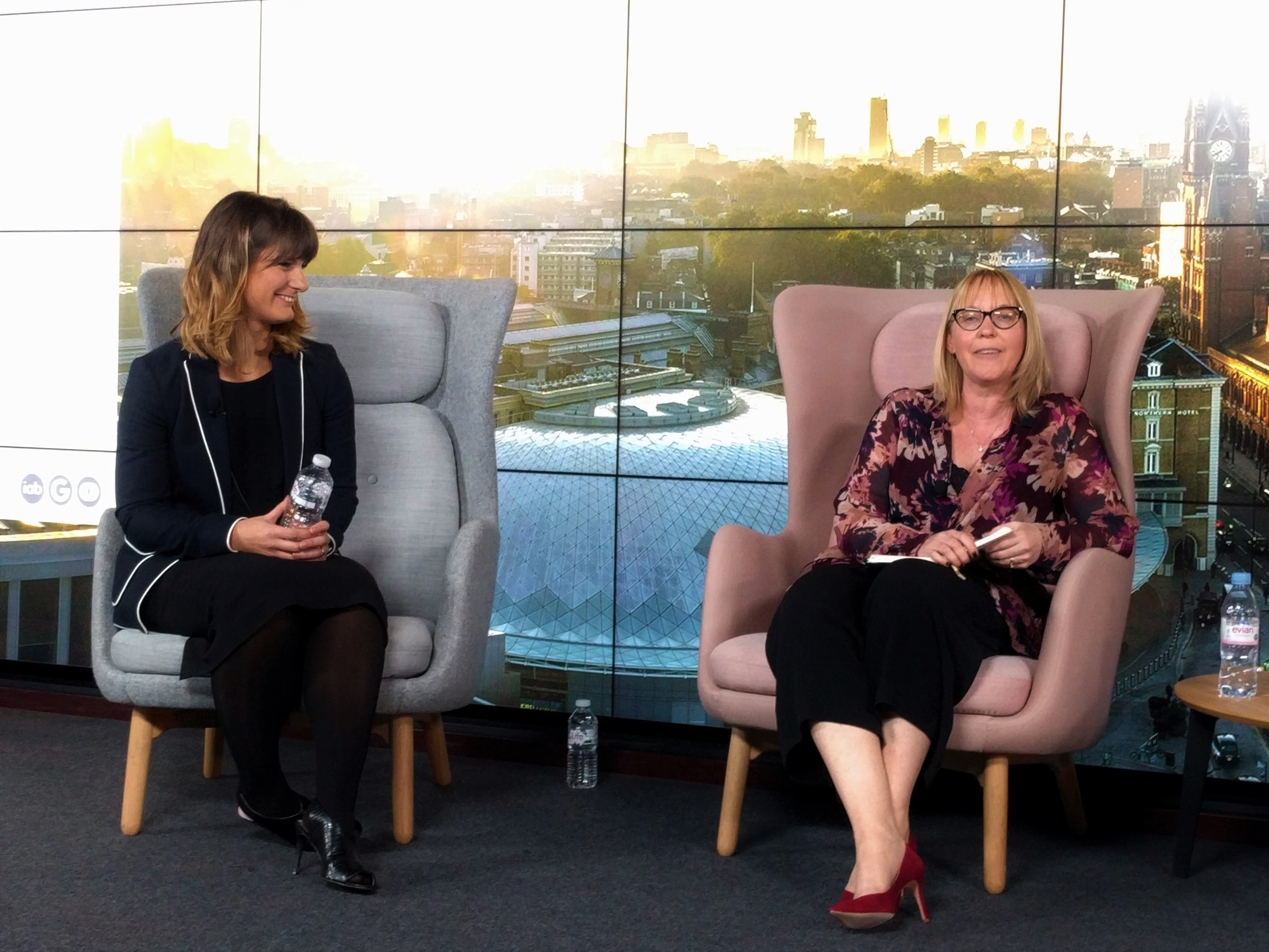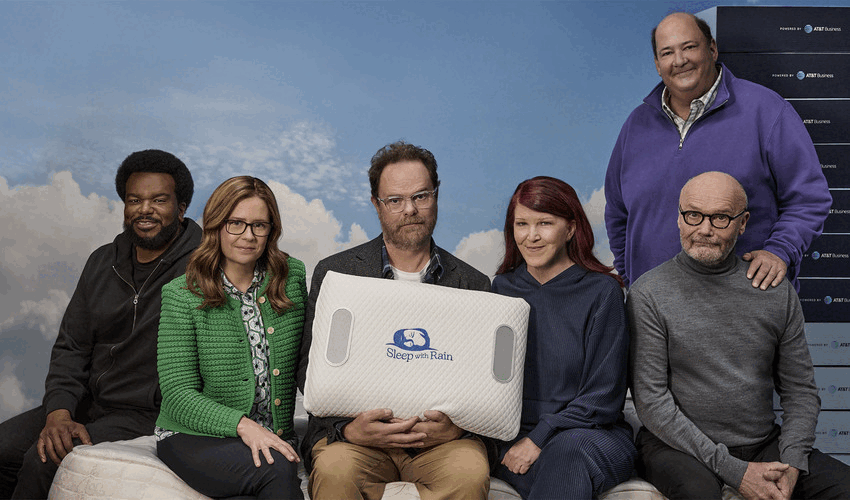Google: Up to 24 per cent of ad spend is wasted through overexposure
- Friday, October 6th, 2017
- Share this article:

Digital ad campaigns bought on a single buying platform showed frequency improvements of as much as 24 per cent in avoiding over-exposure, compared to a siloed buying process.
That’s according to the preliminary results of a joint study from Google DoubleClick and Nielsen, ahead of full results due in the new year. The study tracked five campaigns, in the UK, US, Australia, Hong Kong and France, each with a frequency cap of five impressions.
The biggest improvement – the headline figure of 24 per cent – was seen in an automotive campaign running in France, while across all of the campaigns, overexposure was reduced by an average of 15 per cent.
“That wastage can then be re-employed to reach more people,” said Nielsen head of advertisers Phil Sumner, introducing the results at an IAB Upfronts event this afternoon.
According to Sumner, reach actually saw an “amplification effect” off the back of reduced overexposure. On average, reach grew by 18 per cent, with the best result coming from the French automotive campaign, up 32 per cent.
This effect was especially marked when it came to reaching demographics on-target, which saw an average increase of 23 per cent.

“Making media work harder”
Digital retailer Shop Direct, which represented the UK in the study, saw an improvement of 16 per cent in overall reach, and an on-target uplift of 26 per cent.
“We passionately believed in the hypothesis that we should trade all our digital programmatically, but needed to be able to prove it to our senior stakeholders,” said Sue Varley, brand & digital lead at Shop Direct’s largest brand, Very.co.uk.
Michelle Patrick, head of display at Dentsu Aegis’ Amplifi, Shop Direct’s media agency, which worked on the test campaign, added: “We want to make sure that we are making media work harder. Get rid of wastage, invest that into media that is going to drive growth.”
“Publishers sometimes misunderstand why we as advertisers think programmatic guaranteed is good,” Varley said. “Ultimately, if our money is invested better, better result, we will spend more with that publisher.”
When Shop Direct released its annual results this week, reporting a 5.6 per cent year-on-year rise in revenues, it singled out mobile, and in particular its data-driven approach to personalisation, as the driving factors behind its success.
While this is all part of the brand’s aim to become “a world-class digital retailer”, according to Varley, its relationship with data actually stretches back much further. “Our heritage is in catalogue retailing – that means we’ve got 80 years of customer data behind us.”
Finally, asked what single problem with digital marketing she would wish to see solved, Varley said: “No more walled gardens. Our customers don’t understand why they’re being served the same ad from us multiple times.”
















